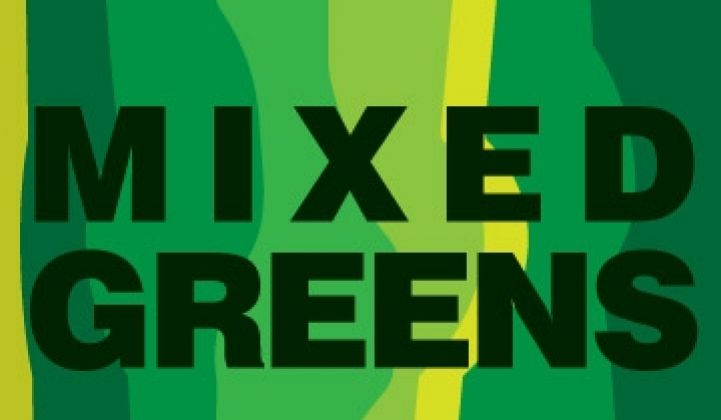Some weeks, we're stuck in the office every day. Other weeks, there seems to be an event every two hours. Here's a roundup of the news of the day:
--Intel formally launched its home energy monitoring system at West Coast Green. It's somewhat of a re-launch. Intel showed the device off at Intel Lab days in June and said at the time that the company already had a contract manufacturer lined up to produce and license the device. It's actually one of the better home energy consoles on the market, boasting an integrated clock and a video answering machine.
Those two features are important, because consumers have a tendency to ignore smart thermostats. The "mean time to kitchen drawer" is relatively short. By putting in an answering machine, consumers are compelled to look at the device. There's more info on Intel's device in the video below. Grid Net, which has smart meter deals in Australia, will help Intel get these into homes. However, Intel may ultimately see a larger volume of Atom chips get into homes through devices from other manufacturers. Intel has a long history of reference designs that end up on the shelf.
During a panel at West Coast Green, experts debated ways to motivate consumers to curb energy consumption. Kristi Burroughs from Best Buy said that home automation systems can't just be sold as a way to save money. Consumers have to establish an emotional connection with their devices. Kevin Ryan at Intel suggested that home monitoring devices could be connected to donation programs. The money you saved could be donated to your child's school. The 27 cents you save for turning down the thermostat on a warm day may not mean squat to you, but you will feel good if it becomes part of an accumulated donation. Interesting idea.
Also at West Coast Green: unusual scooters and cars for the urban environment.
--On other Intel notes, it has been widely documented that there is no Moore's Law for solar or other parts of the greentech industry. However, the industry does have what I'd call Moore's Lite. Moore's Law in the chip industry promised, and delivered, relentless and predictable cost reductions and improvements in performance. Moore's Lite says that the cost reductions and performance improvements will occur, just not as fast or in the same predictable manner. That's because the cost reductions/performance enhancements often come from one-time, not-necessarily-repeatable events like excess factory capacity, silicon prices or material breakthroughs, not transistor shrinkage.
(I made the expression up during a phone call, but please feel free to use it.)
--General Electric unveiled a residential version of its stylish WattStation EV charger today. It is similar to the commercial version unveiled this summer. GE has also enlisted ServiceMagic to install them. With electric cars coming out in serious numbers over the next year, the charging market will pick up. The fact that GE and Schneider Electric have entered this market is an ominous sign for startups. As stated here, the market has few barriers to entry and differentiation remains challenging. Conglomerates thus seem to be in a better position to dominate. Consolidation could occur soon.
--Osram, the lighting giant, and Osram Opto, its chip subsidiary, announced plans to spend 50 million euros to build a plant in Regensburg, Germany for OLED lights over the next three years. Some of the production line will be commissioned next year. OLEDs are thin, flexible sheets of organic films that emit light. In theory, OLEDs can achieve nearly 100 percent efficiency, will last 10,000 to 25,000 hours or longer, and emit over 100 lumens per watt. They are also flexible and lightweight, so architects will be able to embed light panels into windows, doors and walls. The downside? They are difficult to manufacture. OLEDs now are mostly used for displays in cell phones. However, OLED lighting may begin to appear in lobbies and conference rooms by 2012 or so.
Moser Baer, the solar giant, plans to build an OLED pilot line in the U.S. in cooperation with Universal Display. The OLED news came out of the OLED summit in S.F.
--At the Renewable Energy Finance Forum, Michael Eckhart from ACORE (American Council on Renewable Energy) noted that some politicians have complained that China is violating WTO terms. Some of the complaints revolve around China providing discount land to manufacturers.
"We do that here," he said. "In Michigan, we will give you the whole factory, land included. [...] China did what we asked them to. In 2004, 2005 and 2006, we asked them to become more efficient. The darn thing is, is that they did it and we got left in the dust. When I am wearing my U.S. hat I say this is a threat. But when I wear my renewables hat, I have to say this is the best thing that ever happened."
--Finally, how much bigger is coal in the U.S. than solar? The U.S. consumed 166,162 thousand megawatt-hours of coal in June, according to the EIA. Solar thermal and photovoltaic accounted for 143 thousand megawatt-hours. Thus, coal is 1162 times more prevalent.



